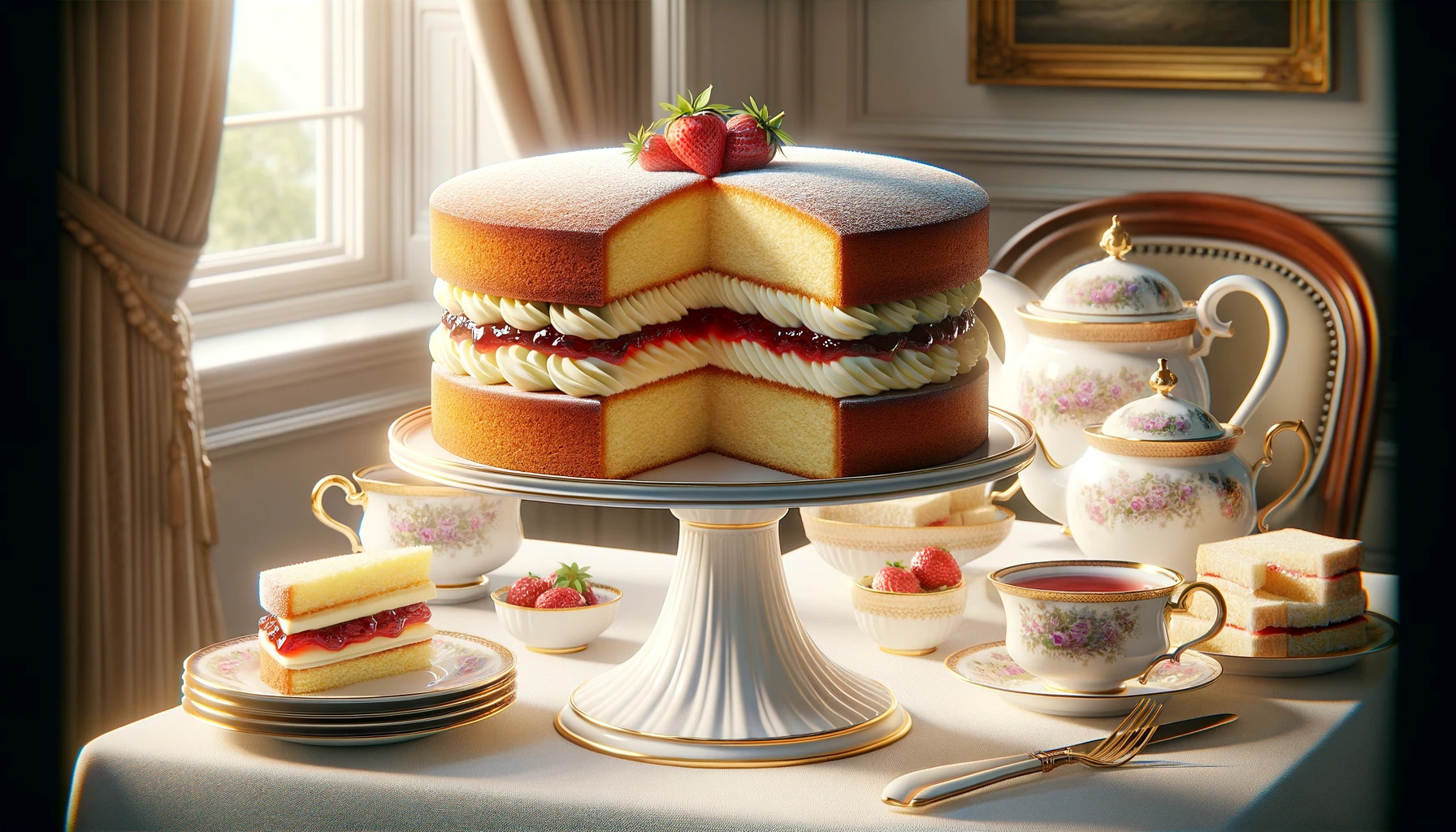Home>Eating>Victoria Sponge Cake: United Kingdom’s Signature Cake


Eating
Victoria Sponge Cake: United Kingdom’s Signature Cake
Modified: February 21, 2024
Discover the classic British Victoria Sponge Cake: a simple, elegant dessert with light sponge, creamy filling, and jam. Perfect for afternoon tea.
(Many of the links in this article redirect to a specific reviewed product. Your purchase of these products through affiliate links helps to generate commission for Simplelivingeating.com, at no extra cost. Learn more)
Table of Contents
When it comes to classic British confections, the Victoria Sponge Cake stands out as a symbol of tea-time elegance and simplicity. Named after Queen Victoria, who favored this delicate dessert during her afternoon tea, this cake epitomizes the very essence of British baking tradition. Its light, airy texture paired with the sweet filling of jam and cream not only offers a taste of royal indulgence but also showcases the timeless appeal of simple, yet sophisticated baking.
Ingredients
To embark on the journey of creating the perfect Victoria Sponge Cake, you’ll need the following ingredients:
- 200g of unsalted butter, softened, plus extra for greasing
- 200g of caster sugar
- 4 large eggs
- 200g of self-raising flour, sifted
- 1 tsp of baking powder
- 2 tbsp of milk
- For the filling:
- 100g of unsalted butter, softened
- 140g of icing sugar, sifted, plus extra for dusting
- 1 tsp of vanilla extract
- 200g of strawberry or raspberry jam
- Fresh strawberries or raspberries (optional, for decoration)
Instructions
- Preheat your oven to 190°C (375°F, Gas mark 5). Grease and line two 20cm (8in) round cake tins with baking paper.
- In a large bowl, cream together 200g of softened butter and 200g of caster sugar until pale and fluffy.
- Beat in 4 large eggs, one at a time, incorporating a little flour with each to prevent curdling.
- Fold in the remaining flour and 1 tsp of baking powder, then stir in 2 tbsp of milk to create a smooth, dropping consistency.
- Divide the mixture evenly between the prepared tins, smoothing the surface with a spatula.
- Bake for 20-25 minutes or until golden and a skewer inserted into the center comes out clean. Allow to cool in the tins for 5 minutes, then turn out onto a wire rack to cool completely.
- For the filling, beat 100g of softened butter with 140g of sifted icing sugar and 1 tsp of vanilla extract until light and fluffy.
- Spread the buttercream over the bottom layer of the cake, followed by 200g of jam. If desired, add a layer of fresh strawberries or raspberries.
- Carefully place the second cake layer on top and gently press down. Dust with icing sugar and decorate with more berries if using.
Tips
- Ensure all ingredients are at room temperature to achieve a smoother batter.
- When creaming butter and sugar, beat until the mixture is noticeably lighter in color and fluffy; this can take several minutes.
- Sift flour and baking powder to incorporate air and ensure a lighter sponge.
- Do not open the oven door while baking as sudden temperature changes can cause the cake to collapse.
Serving and Presentation
The Victoria Sponge Cake is best served on a beautiful cake stand, accompanied by a pot of freshly brewed tea. The traditional presentation involves a generous dusting of icing sugar on top, with or without fresh berries for a touch of color. Each slice reveals the creamy, jammy filling, inviting a moment of indulgence in every bite. Serve as part of an afternoon tea spread, alongside dainty sandwiches and scones, to truly embrace the British tea-time tradition.
Conclusion
The Victoria Sponge Cake stands as a quintessential example of signature cakes, embodying more than mere sweetness; it’s a piece of British culinary heritage that continues to delight and inspire bakers around the world. Its simplicity, coupled with the elegance of its presentation and the perfection of its taste, makes it a timeless classic. Whether you’re a novice baker or a seasoned pro, mastering the Victoria Sponge offers a rewarding and delicious way to connect with a piece of British history. So, preheat your oven, don your apron, and prepare to bake a cake fit for a queen.

